- News
- Reviews
- Bikes
- Accessories
- Accessories - misc
- Computer mounts
- Bags
- Bar ends
- Bike bags & cases
- Bottle cages
- Bottles
- Cameras
- Car racks
- Child seats
- Computers
- Glasses
- GPS units
- Helmets
- Lights - front
- Lights - rear
- Lights - sets
- Locks
- Mirrors
- Mudguards
- Racks
- Pumps & CO2 inflators
- Puncture kits
- Reflectives
- Smart watches
- Stands and racks
- Trailers
- Clothing
- Components
- Bar tape & grips
- Bottom brackets
- Brake & gear cables
- Brake & STI levers
- Brake pads & spares
- Brakes
- Cassettes & freewheels
- Chains
- Chainsets & chainrings
- Derailleurs - front
- Derailleurs - rear
- Forks
- Gear levers & shifters
- Groupsets
- Handlebars & extensions
- Headsets
- Hubs
- Inner tubes
- Pedals
- Quick releases & skewers
- Saddles
- Seatposts
- Stems
- Wheels
- Tyres
- Health, fitness and nutrition
- Tools and workshop
- Miscellaneous
- Buyers Guides
- Features
- Forum
- Recommends
- Podcast
feature
 Which chainset is right for you October 2018
Which chainset is right for you October 2018Which chainset is right for you? Should you choose a standard, a compact or something else?
The chainset, called a crankset in some parts of the world, is the name given to the chainrings and the crank arms that turn them. Different chainsets make a big difference to the character of your bike and the way it feels when you ride.
Check out our Beginner’s Guide: Understanding Gears here.
Most road bikes come with a double chainset, meaning that you have two chainrings. The larger chainring gives you bigger, harder to turn gears that move you further per pedal revolution – so it's suitable for higher speeds – while the smaller chainring gives you gears that are easier to turn but move you a shorter distance per pedal revolution – so it's suitable for lower speeds, including riding uphill.
However, some bikes come with a triple chainset, meaning that you have three chainrings, and others use a single chainring matched to a wide-range cassette (the group of sprockets that sit at the centre of the back wheel).
Let’s go through the main road systems in turn.
Standard chainset
A standard chainset (a bit of a strange term these days) has a 53-tooth (or 52-tooth) outer chainring and a 39-tooth inner chainring. This used to be the default option for road bikes and it’s the choice of most racers in the majority of circumstances. Sometimes, though, pros will switch to larger chainrings for time trials or flat races like Paris-Roubaix.
Of the big three groupset manufacturers, Shimano and Campagnolo offer standard chainsets in their higher level road groupsets aimed at pro riders and other racers/serious enthusiasts, but not in their lower end groupsets aimed at more casual riders. SRAM only offers a 53/39 in its Force 22 groupset; the AXS wireless electronic systems have their own take on gearing with smaller chainrings and a 10-tooth smallest sprocket.
The 53/39 chainset is now a rarity outside the professional peloton. The last bike we tested that came equipped with one was in 2017, so we should probably stop calling it a standard crankset, because it isn't. There's apparently a further need for speed among the pros though, because Shimano offers a 54/40 option on the latest Dura-Ace Di2 groupset. That's because, of course, pro cycling is much cleaner these days and without performance-enhancing drugs everyone has slowed down. Yup. Ah-huh.
Example bike Tifosi SS26 Aero
Compact chainset
A compact chainset has a 50-tooth outer chainring and a 34-tooth inner chainring. This means that the gears are lower (easier to turn, but they’ll progress you a shorter distance per pedal revolution) than you get with a 53/39 chainset (above) with the same cassette.
For more details on that, see How much difference does a new chainset make? (below).
Compact chainsets have become massively popular because they allow you to keep moving up steep hills, albeit sometimes quite slowly, and many people prefer to turn smaller gears at a higher cadence (the number of pedal revolutions per minute) because it puts less stress on the knees.
The flip side is that you might run out of gears on very fast descents. In other words, you won’t be able to turn the pedals fast enough to make any difference to your speed above a certain point.
Reflecting their popularity, the three largest groupset manufacturers offer compact chainsets across all of their road groupsets.
Example bike Ribble CGR Ti Sport
Semi-compact chainset
A semi-compact chainset, sometimes called mid-compact or faux pro, has a 52-tooth outer chainring and a 36-tooth inner chainring.
This means that the biggest gears aren’t quite as big as those of a 53/39 chainset but they’re not far off, and they’re larger than those of a compact.
The small gears aren’t quite as small as those of a compact chainset, but they’re smaller and easier to turn than those of a 53/39.
Semi-compact chainsets have become popular over the past few years because they offer something for most types of terrain. Many of the road bikes we review here at road.cc are now fitted with these.
Shimano and Campagnolo offer semi-compact chainsets on all but entry-level road groupsets.
Example bike Quintana Roo SRfive
Sub-compact
Want lower gears? A sub-compact chainset is a double with rings smaller than the compact's 50/34 pairing. Usually they're 48/32 or 46/30, dropping the whole gear range a few percent to make those grinding climbs that little bit less painful.
The gravel/adventure bike movement has been the main driver of sub-compact chainsets. Fat tyres and dirt tracks demand lower gears, especially if you’re carrying anything extra, like clothes and so on for an overnight stay.
But we think they have a place for general riding too. As soon as you hit seriously hilly terrain, there's going to come a moment when you need the lowest gear you can get. You might have blown up, you might have hit a 20% grade or steeper. Options like FSA's Adventure series cranks, Sugino's OS cranks, or the Praxis Works 48/32 cranks give you a slightly lower gear range for those situations.
Example bike: Genesis CDA 30
Triple chainset
A triple chainset is one with three chainrings. Shimano offers triple chainsets for its three cheaper road bike groupsets – Claris, Sora and Tiagra. In each case the chainrings are 50, 39, and 30-tooth. Campagnolo until recently offered Athena in a triple (52, 39 and 30-tooth chainrings) and there are still a few in dealers, but they're rare. SRAM doesn’t offer triple chainsets for its road groupsets.
You do get some very small gears with a triple chainset, but there’s a lot of duplication (different chainring/sprocket combinations giving the same, or virtually the same, gears) and most people find a double chainset with a wide-range cassette ample and more convenient to use.
That said, a triple can be a good idea, especially for something like a touring bike where you need those very small gears to climb while carrying a heavy load.
Swapping from a double to a triple, or the reverse, is quite an expensive process because you need to change other groupset components too.
The wide-range gearing offered by sub-compact chainsets means triples have almost vanished from road bikes. We've seen two in the last couple of years, both on touring bikes.
Example bike: Surly Disc Trucker
Single chainset
Bikes with single chainrings are nothing new, of course – there are millions of them out there – but most aren’t particularly performance-orientated. SRAM offers single chainring versions of its road groupsets with wide-range cassettes.
SRAM says that these 1x (pronounced ‘one by’) groupsets are simpler because there’s no front mech or front shifter, there’s no chance of the chain rubbing on a non-existent front mech, and they’re quieter on rough surfaces.
SRAM also says that the interface between the chain and chainring is better because their specially designed chainrings have tall, square teeth edges that engage the chain earlier, and the traditional sharp and narrow tooth profile helps manage a deflected chain.
When we reviewed the SRAM Rival 1 groupset we said that it was simple and durable. It’s not a system that will appeal to everyone, but for a variety of applications such as gravel, adventure and cyclocross, it makes a lot of sense.
The 1x chainsets are available with a variety of different sized chainrings to suit the riding you do.
Shimano doesn't offer single-chainring set-ups for road bikes, but there are several version of the GRX gravel bike compoent series with single chainrings, and Campagnolo pairs a single chainring (there's no double option) with 13 sprockets in the Ekar gravel groupset.
Example bike The Light Blue Robinson Rival 1x
The SRAM alternative
SRAM turned it up all the way to 12 a few years ago with the Red AXS eTap groupset, quickly followed by a Force version for those without amazingly deep pockets.
Out back the groupsets have cassettes that start with a 10-tooth sprocket, so there's no need for a 54-, 53- or 52-tooth chainring to get high gears.
SRAM therefore offers chainring combinations of 46/33, 48/35, and 50/37, plus the Force Wide system has a 43/30 crankset.
However, all these chainsets are designed to work only with SRAM's 12-speed system. In terms of the gearing they provide and how you'd use them, they pretty much map against the double chainsets we've discussed. If you're used to 53/39 you'd choose a SRAM 50/37. Happy with 52/36? Go for SRAM 48/35. The SRAM 46/33 gives a roughly equivalent set of gears to a compact chainset while the 43/30 is SRAM's answer to sub-compacts.
Of course, the overall gear range you get will depend on the sprockets too, and you'll almost certainly end up with a wider gear range with SRAM because of those 12 sprockets. Whether you add the range at the low end, the top or a little at each end is up to you.
Example bike: Giant TCR Advanced SL 0 Disc
How much difference does a new chainset make?
Say you have a typical 700c wheel fitted with a 25mm tyre, and you’re using an 11-28 cassette. That’s a fairly common setup.
If you have a 53/39 chainset, your smallest gear (39-tooth inner chainring x 28-tooth largest sprocket) is 36.7in. If that doesn’t mean much to you, check out our Beginner’s Guide: Understanding Gears for an explanation. Put another way, if you pedal at 80rpm, you’ll move at 8.7mph.
If you have a compact chainset, your smallest gear (34 x 28) is 32in, so quite a bit smaller than that of a 53/39 chainset. That means it’s much easier to turn the cranks. If you pedal at 80rpm, you’ll move at 7.6mph, so quite a bit slower than when pedalling in the smallest gear of a standard chainset at the same cadence.
If you have a semi-compact chainset, your smallest gear (36 x 28) is 33.9in. If you pedal at 80rpm, you’ll move at 8.1mph.
At the other end of the speed scale, say the maximum cadence you can hold for a short period of time is 120rpm. If you pedal a 53/39 chainset in your biggest gear (53 x 11), you’ll be able to pedal up to 45.4mph at this cadence.
Do the same thing with a compact chainset (50 x 11) and you’ll get to 42.8mph, and with a semi-compact (52 x 11) you’ll get to 44.5mph.
In short, a compact chainset will give you some small gears for keeping moving up steep hills while a 53/39 chainset will allow you to keep the pressure on for longer on fast descents.
A semi-compact gives you some small gears, but not as small as a compact, and some big gears, but not as big as a 53/39 chainset.
Changing chainrings
What if you feel the chainset you’re currently using isn't right for you and the riding you do?
Swapping chainrings is relatively straightforward in many cases (you'll need Allen keys, perhaps a Torx wrench or a chainring nut wrench too), but you need to make sure you get new chainrings that are compatible with your chainset. Chainrings come with different bolt circle diameters (BCDs) and bolt spacings (higher level Shimano and Campagnolo chainsets come with unequal bolt spacings).
In many cases you can turn a standard chainset into a compact chainset simply by swapping the chainrings. You can take a 53-tooth outer chainring off a modern Shimano 105 chainset, for example, and replace it with a 50-tooth chainring because both chainrings use the same bolt circle diameter (BCD). This is also true of Dura-Ace, Ultegra and Tiagra.
This didn’t used to be the case. If you had a compact chainset with a 110mm BCD, you couldn’t fit larger Shimano chainrings with a 130mm BCD.
The point is that you need to be careful to buy replacement chainrings that work with your chainset.
Don’t forget that if you change chainring size, you should adjust the position of your front derailleur accordingly, and you may need to alter the chain length too.
Mat has been in cycling media since 1996, on titles including BikeRadar, Total Bike, Total Mountain Bike, What Mountain Bike and Mountain Biking UK, and he has been editor of 220 Triathlon and Cycling Plus. Mat has been road.cc technical editor for over a decade, testing bikes, fettling the latest kit, and trying out the most up-to-the-minute clothing. We send him off around the world to get all the news from launches and shows too. He has won his category in Ironman UK 70.3 and finished on the podium in both marathons he has run. Mat is a Cambridge graduate who did a post-grad in magazine journalism, and he is a winner of the Cycling Media Award for Specialist Online Writer. Now over 50, he's riding road and gravel bikes most days for fun and fitness rather than training for competitions.
Latest Comments
- ktache 3 hours 28 min ago
The small frame, the aggressive posture, lots of standover height.
- mctrials23 4 hours 24 min ago
As i've said before, the police should be sued for a lot of money when someone they have knowingly ignored has gone on to commit a serious crime....
- David9694 4 hours 31 min ago
'Bad parking' blocks firefighters multiple times on same emergency call-out...
- David9694 4 hours 35 min ago
Cambridgeshire boy, 13, crashes Audi into garden wall after taking it from home...
- Adam Sutton 5 hours 21 min ago
Good stuff. Now do it on cycleway C9 through Hammersmith to Chiswick.
- mark1a 5 hours 30 min ago
It's technically allowed but it's not known as "London's Orbital Car Park" for nothing.
- Dogless 6 hours 38 min ago
You're defending bombing hospitals and refugee camps and starving children.
- mattw 9 hours 18 min ago
Used car salesman is a complete attention-seeking plank....
- tubasti 9 hours 35 min ago
I don't know if they're any better, but they's certainly become more boring.
- FionaJJ 10 hours 1 min ago
At risk of being cynical, and stereotyping the police, it's so they don't have to leave the comfort of their panda cars and pursue on foot when...

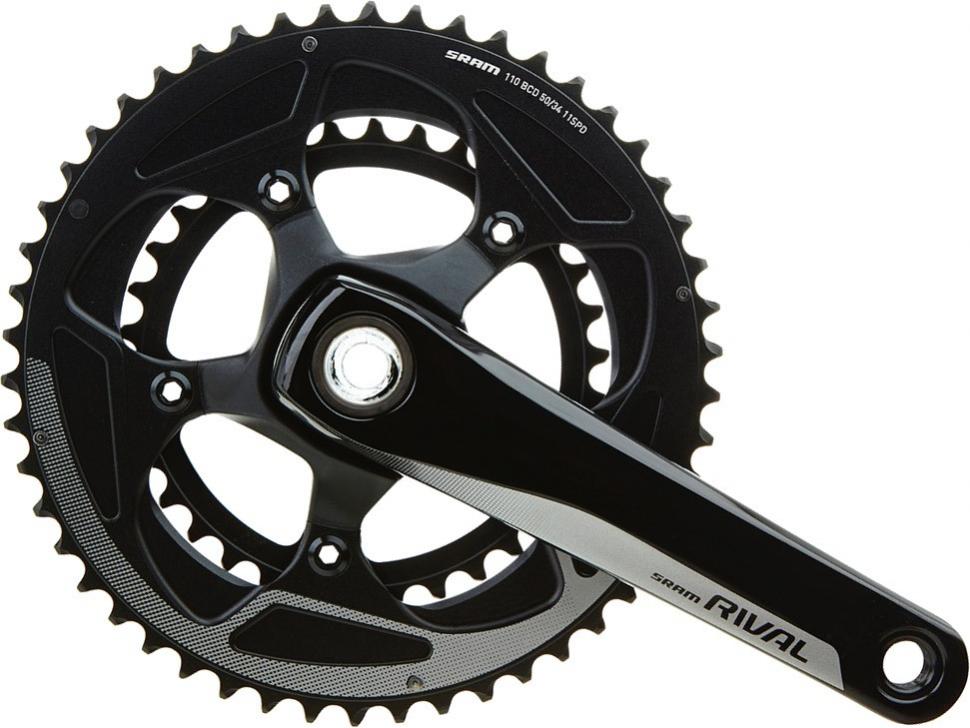

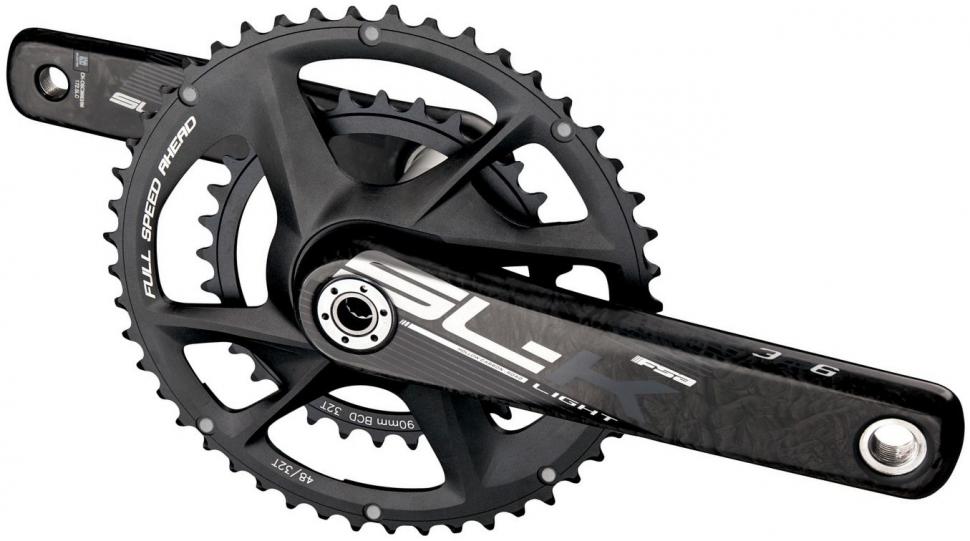
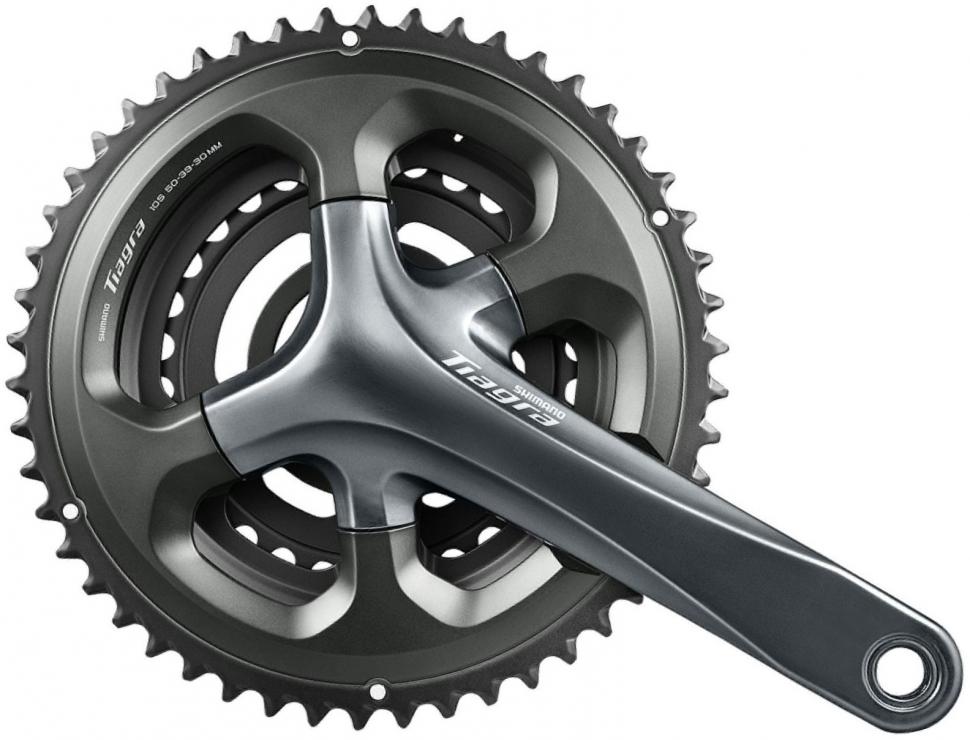

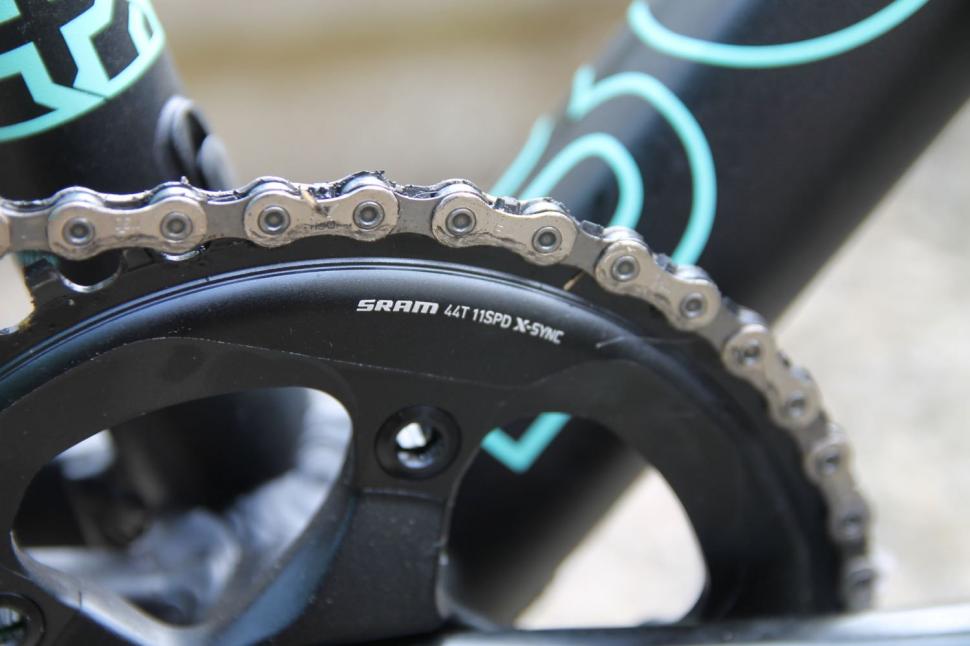
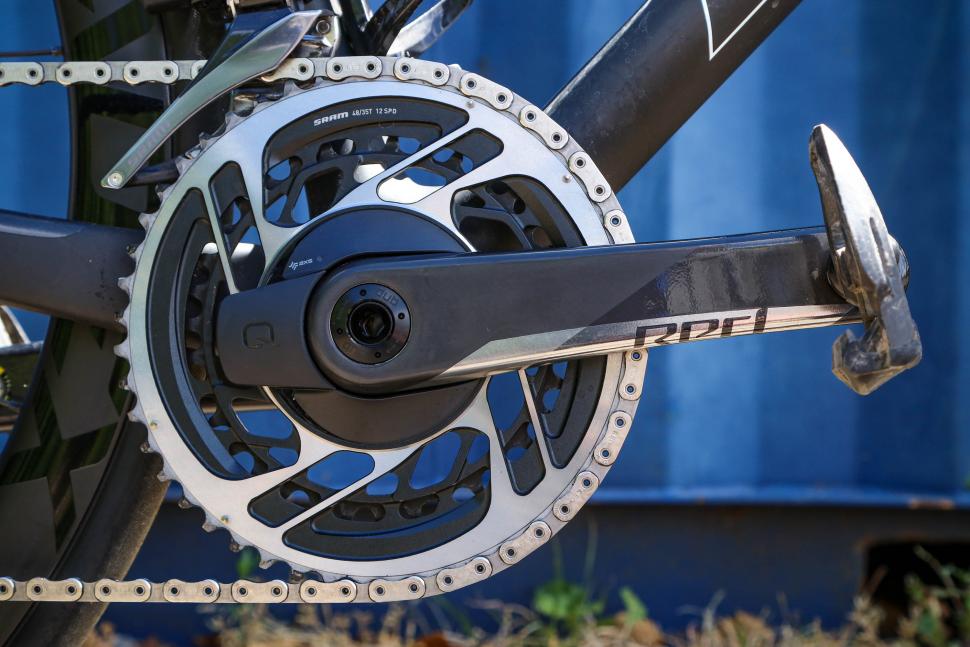
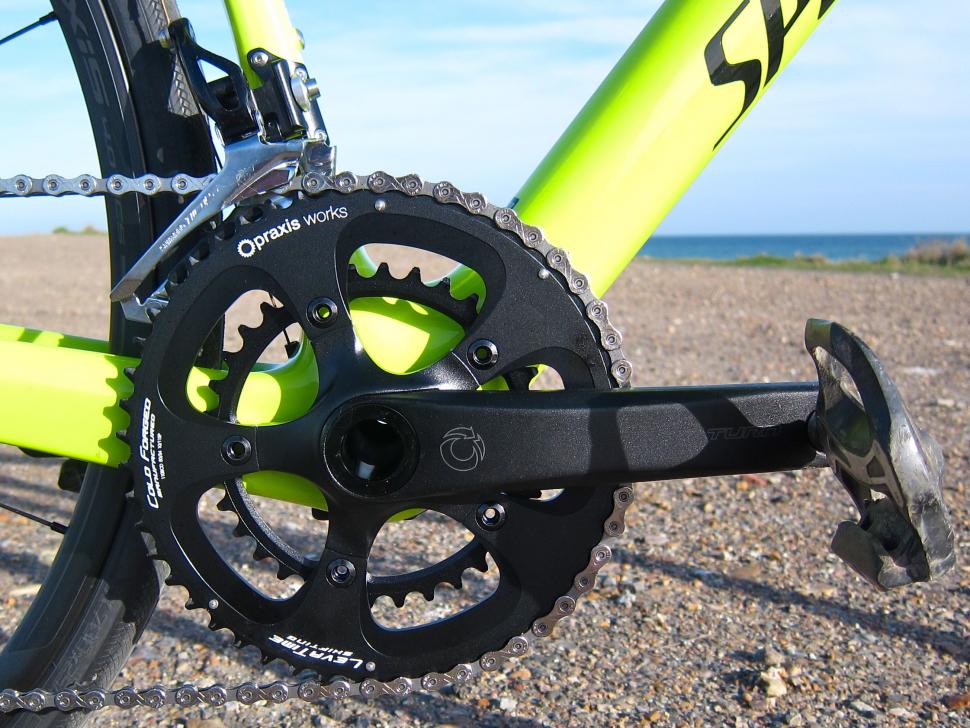

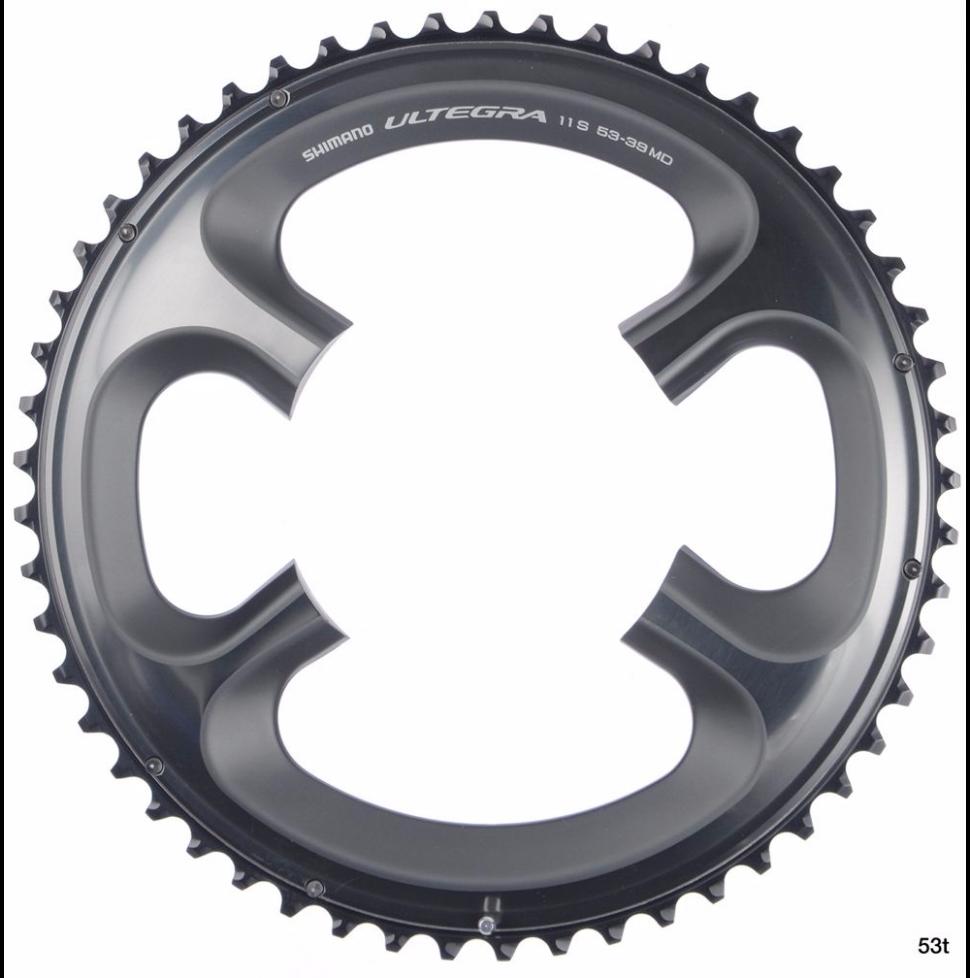
Add new comment
87 comments
I run a mtb crankset with a 9 speed outer ring to make 44/28. I can climb mountains with a high cadence and average over 21mph on 80 mile runs, so most folk wont really need more.
The types of cranks sets are really defined by their BCD (bolt circle diameter) which then defines the possible sizes of chainrings that can be used. The BCD determines the smallest chainring that can be mounted. The compact introduced a smaller 110mm BCD which allowed a 34t chainring as it's smallest ring on a double chainset. You can still put regular 39/52, etc, chainrings on it if you want to, but on a standard 130mm BCD you can only have a 39t as the smallest. Triples use two bolt circles to allow a very small chainring on the innermost 74mm BCD.
So I would have reversed your discussion and started with BCD and gone from there. If you want to change your rings the first question is, what BCD is your chainset.
I've found a compact (110 BCD) chainset with a 42/34 works very well, then I can run a small step cassette. I don't need more than a 42:11 top end gearing, which gives 30mph at 100 rpm. And this avoids the large 50/34 shift on the front that is just awkward to use. See
https://wickwerks.com/product-category/chainrings/cyclocross-chainrings/
for sub-compact chainrings designed to shift nicely.
On my commuter I'm currently running a 38/50 combination, using a 110BCD crankset. On rare occasions I hit about 58km/h, but really never anything above that. Given than I seldom do high speeds on a commute, I am thinking of reducing the big ring to either a 46 or 48.
The rationale for the close ratios is that I neither have to deal with high speeds nor big hills. Close ratios allow me to get the best wear out of my sprocket. Shifting is also smoother with a smaller difference in tooth count on the rings - something that is useful on a bike that gets the cr*p ridden out of it - my commuter currently has over 50000km on the clock.
Why are the super-compacts all so chuffing expensive?
Surely there are enough of us weaklings around to warrant Shimano doing something like a 105 or Tiagra quality in something like 40-26 ?
Instead we're forced into fugly solutions like triples with the outer removed.
In my view, the issue is more at the cassette end of the drivetrain than with the chainrings.
I'd be more than happy with the compact offering if only the manufacturers would give us a better choice of cassette ratios. 11 at the back is redundant for me and many I ride with. A cassette with 12 - 28 or 12-30 would still give a sufficient top speed, good range and close ratios.
I have an Ambrosio 12-28 cassette on my CX bike, paired to a compact chainset.
IIRC Campag also does Chorus cassettes in 12-27 - at least I think thats whats on my "race" bike - with a standard up front it is fine for pretty much everything except XTREME climbing.
52 36 and 11 28 cassette I find is right for me.
i have three bikes with different set ups and this one is the best.
I'm 5'7 1/2" and have 172.5 cranks.
I'm definitely a convert to the spin brigade now. I'm 5'11 on compact with 165mm cranks and just stuck a 11-32 on yesterday before I hit the hills on the outskirts of Harrogate.
Loved it. I was able to conserve my energy a lot better with 32 on when needed and the power meter was telling me I making better power at times than the next cog with a slower cadence. Took PRs on literally every hill I hit and knocked 20s off a previous 4 minute climb.
Horse for courses I guess but my torque output is probably pretty poor for big ring ascents, so I'm playing to my strengths as my cardio seems to have improved to support the spin.
I have a triple on my touring/cross bike with a 28T small cog. Combined with a 34T on the cassette on the back.
Perfect for lugging 15kg+ of full panniers over the Pennines and through the Lakes.
Wouldn't ever switch to a standard or compact for this type of riding.
Surely no discussion on this subject would be complete without mentioning Wavetrans!
http://www.wavetransmission.com/
Personally, I think this is the future where fixie/single-speed meets commuter and on to infinitry & beyond. But that's just me.
Could this be the death of the rear derailleur?
"It's the hapless beginners I'm most worried about"
agree I've seen it on some challenge rides that I've done - people have presumably put straining in to go the distance but riding a standard road double up anything 10% plus is hard and its sad to see people sat at the side of the road and then getting off and pushing just because club riders with years of hard training can ride 39 / 26 ok on that sort of gradient doesn't mean the average punter should HTFU with a couple of years in the chain gang and hill intervals
bit biased I run a MTB touring triple 48 36 26 with a 32 out back which will get me up 25% hills OK and gravel roads - so not a standard roadie set up as sacrifices smooth front changes for the range - though recall chatting with a guy as we spun our way past grinders and pushers at an event with a long 10% + climb near the end - he was twiddling away on a very road looking machine with 34 32 and if I only rode on "normal" roads thats the way I'd go and that what I'd advise anyone starting out that wants to enjoy cycling hilly terrain to run with
Compact for me and a 165mm crank to boot. I'm 5'11 so some people think I'm doing something horribly wrong choosing such a short crank but it's really helped me rehab my knee and a groin strain that kept coming back. It's also forced me to up the cadence as I was grinding before.
It can't be all that bad as I recently knocked 15% off one of my hill times and I thought that would suffer with less torque on a shorter crank. Spin to win!
Does pedal length alter the maths?
Yes, as the longer the cranks, the more leverage you get. However, at the extremes, that can cause problems as the longer the cranks the greater the distance from the top of the stroke to the bottom, so you can only get them so long with any given pair of legs.
I've always used 39/53 but recently used a hire bike (a Canyon Ultimate) out in Spain whcih came with a 36/52. I'm not a huge fan of low gears on the road, in fact I absolutely hate compact chainsets but I was surprised how good the semi-compact was. Only used the lowest gear (36-28) once though and that was on a steep gravel road climb so it seemed a bit of a waste of that end of the gearing, especially on such a light bike.
This article could have been a couple of days earlier, for me. My Sabbath just went into the menders, receiving a new semi compact set up. 11 speed (whoopp whoop !) 12 - 30. That should cover me into my 60's when I guess i'll be swaping (knee caps, hahhaha) and my chanset out for a triple and maybe a hidden electric motor.
Since when was 53/39 the standard set that was used on road bikes as default?
I thought it was 52/42 or am I showing my age
You certainly are showing your age Butty, as am I. But it's good to find I'm not the only member who considers the 53/39 to be a modern upstart.
A 42 inner chainring is probably sufficient if you live in Holland or have the legs of the Incredible Hulk
42 changed to 39 when the racers stopped taking drugs and had to spin up the Alpine passes.
Well I would like to join this conversation and throw another type into the mix. I run a cyclocross Ultegra Chainset on my road bike with its 36/46 rings. The 10 tooth jump as opposed to a 16 tooth jump on a compact or semi compact makes front changes so much faster and means when going from the big ring to the little you don't have such a big jump in cadence (and by shifting the rear a couple of gears you can remove this entirely. I do not miss the change in top speed as 46-11 at 120 rpm gives you 40 mph which is more than I need.
Hear, hear. My TCX SLR 2 came with an FSA Omega 46/36T crankset as well. I'd argue it's a great set of ratios for most everyday cycling. Even with a 12-30T cassette, I could cross-chain all day and have zero issues. Pushing the 46x12, I could sustain 48 km/h on the flats (and this was before I adopted clipless pedals).
I think it would be easy enough to replace the 36T small ring with a 34T for better ascending, since they use the same 110 mm BCD.
Unfortunately I desired both lower gearing for climbs and a higher overall top speed, so I ended up swapping it out for a Shimano 105 FC-5750. After almost two years on the Omega, the huge jump between the 50 and 34T rings on the Shimano crank was jarring for the first couple months.
If you can sustain 30mph on the flat then your talent is wasted on a 46/36, or even 50/34!
Try a standard chainset - it would make the most of your abilities over a range of conditions, could make you an even stronger rider, plus no jarring gap of 16 teeth as you have now with the compact..
Too right. One of the Strava sections on my way home is topped by a guy that held 31 over 3 miles or so and the top 50 is full of club riders. Wasted talent indeed!
I have a fsa k-force light bb386 with 53/39. I have an alpine trip coming up and fancy something spinnier. Can I change the inrng for a 36 and cassette for a 12-27 (currently 11-25 chorus 11s) and make it run smoothlyish? Trying to get a cheap option, don't mind the practical aspect.
my road bike now has a 30/39 (a triple, with the largest ring removed).
i was at the back of the queue when God was handing out the suplesse, and i can spin my tallest gear along (ok, down) at 50+kph, snot even *that* spinny. I'm not recommending it for everyone, or criticising anyone elses choice, but it's an effective option that i'm pleased with.
re crank length: it's about bloody time they were made in lengths that actually made a difference. 165 is not really all that short, and must be very uncomfortable for anyone shorter than 5'8".
Eh? I'm not even 5'8" and I have eeny weeny toy legs and I use 170mm cranks on two bikes and 172.5mm cranks on the commuter. No problems here...
out of curiousity, have you tried *properly* short cranks? eg 140mm?
(they're not as weird as you might think - and i've got silly long legs)
I've not, but I'm not uncomfortable on the cranks I'm using at the moment, and I'm not keen to spend money to fix a problem I don't appear to have!
I'm 5'7 3\4" and use 172.5 cranks on my road bikes with 50/36 rings and 11/28 cassette. My old MTB has 175 cranks. You just get more leverage with extra crank arm length. Nowt to do with short legs as mine are only 32" (inside measurements). I find that a 34 chainring on 11/28 cassette too low. There again I don't like spinning high revs. It's all personal !
Pages